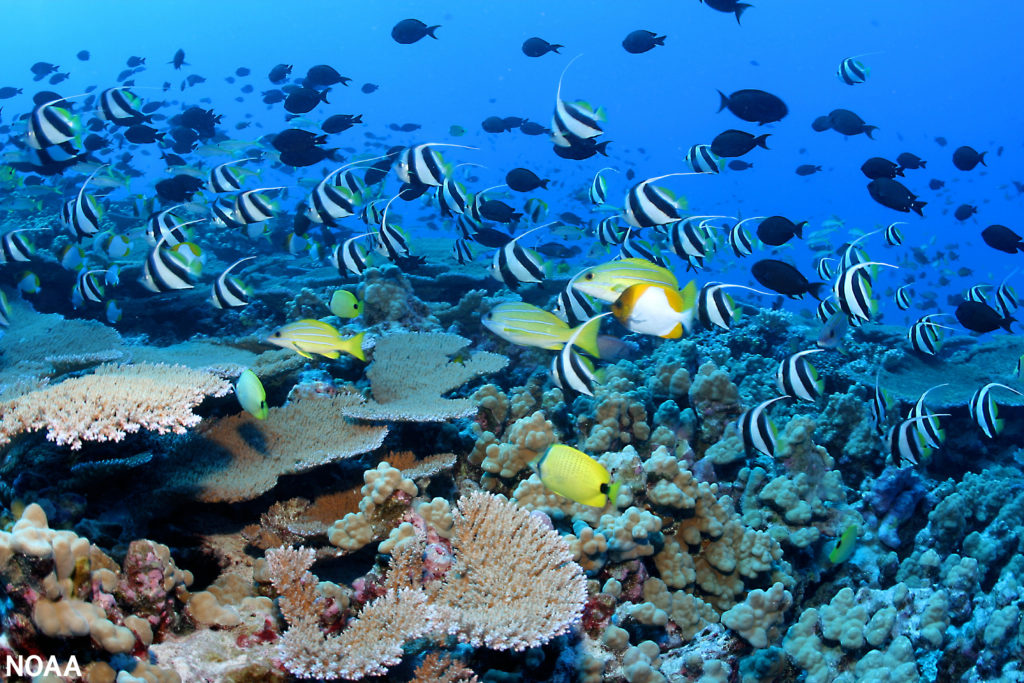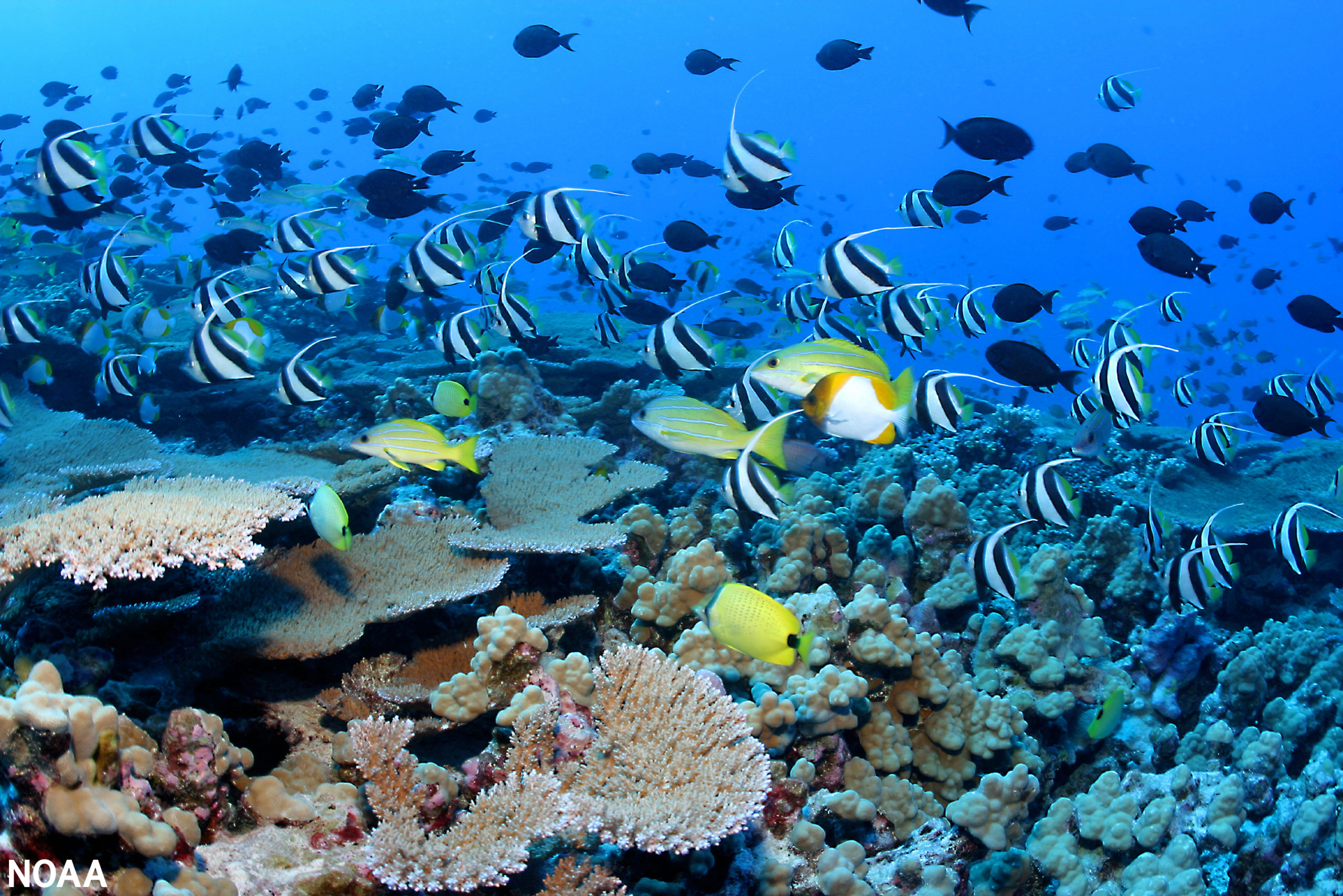Whipping winds on the surface, fatal turbulence below.
During hurricanes, some humans flee: sharks do the same. Other humans stock up and brave it: just like territorial fish. Turbulent currents below cause towering waves on the surface. Habitats are torn apart, and coral reefs are demolished and bleached. A whole populace of marine life, along with the environment it inhabits, can be dismantled by freshwater runoff created by rips in sediment and fatal currents unleashed by the storm. Marine life forms are alike to humans in that they are highly susceptible to the damage wrought by hurricanes. And, just like humanity, marine life has difficulty recovering from the aftermath of a hurricane.
One of the most poignant examples of the catastrophic effects of hurricanes on marine life occurred in September of 2017, when ruinous category five Hurricane Irma (1), which was the most powerful hurricane until then to have originated over the Atlantic, devastated the Florida Keys and the Caribbean. Hurricane Irma was followed weeks later by category five Hurricane Maria, which affected the same regions. The populants of these regions were ravaged, human and marine. For example, around 10.8% loggerhead turtle nests (about 2,060 nests) were destroyed by hurricane Irma (9). While this devastation was caused by a natural phenomenon, mankind is not exempt from the blame.
Global warming, caused by human factories and their greenhouse gas emissions, has resulted in a warmer atmosphere, which lends itself well to the formation of hurricanes. The warming atmosphere holds more water vapor that enhances moisture convergence and thus increases rainfall rates in storms (7). As greenhouse gases continue unchecked, so will hurricanes.
Climate change, in addition, amplifies the vulnerability of marine species when hurricanes hit. Already vulnerable ecosystems, like those of the Caribbean, will be continuously damaged. Overfishing and pollution in the Caribbean produces the overgrowth of algae, creating increased difficulty in finding food and nutrients for marine life. A fatal storm would ravage these habitats even further. The majority of marine life is left to the mercy of the hurricanes, though some animals, like sharks and dolphins, can sense changes in barometric pressure and water temperature, and take them as cues to flee. When the violent waves begin to wreak havoc on ocean ecosystems, many species have greatly diminished natural capacities to defend themselves.
Hurricanes create massive waves that result in a host of consequences for marine life. When the saltier and colder waters in the depths of the oceans are mixed with the warmer water nearer to its surface, they can create waves up to 60 feet high, affecting ecosystems 300 feet below (3). These waves and currents cause the disruption of ocean floor sediments which smother and spew rocks into marine life like coral. Coral reefs are already suffering and bleaching. When coral is broken, it becomes much more susceptible to fatal disease.
Coral reefs are hardly the only marine life forms that suffer damage due to the turbulent chaos of ocean currents during a hurricane. These currents rip up the ocean ground, causing sand and rocks to hit fish and clog their gills. Hundreds of fish will wind up on nautical shores. Animals such as Manatees have been swept away to inland water sources where they can become disoriented and occasionally die.
Heavy rains also produce freshwater runoff into the oceans salt water (5). Since freshwater is less dense than salt water, it changes the salinity and lies on top of the water like oil. This prevents vital amounts of oxygen from reaching the depths of the ocean, suffocating marine life.
Recovery from hurricanes is long and drawn out, if it occurs at all.
Coral reefs are one example of how the impairment of one species in an ecosystem can have drastic consequences for the rest. They support biodiversity, provide food and shelter to many organisms, and are where many fish reproduce and hide their young (4). Coral reefs are also a huge carbon reservoir and the climate will suffer greatly with the loss of more reefs after each storm.
Our oceans and ocean dwelling creatures depend on the coral reefs and seagrass meadows, and vice versa. The diminution of our already suffering marine life will continue as more hurricanes devastate our seas.

Bibliography
- Wikimedia Foundation. (2021, September 24). Hurricane Irma. Wikipedia. Retrieved October 4, 2021, from https://en.wikipedia.org/wiki/Hurricane_Irma
- Unsworth, R (2021, June 2) How hurricanes such as Irma and Maria can devastate the caribbean marine environment. The Conversation. Retrieved October 4, 2021, from https://theconversation.com/how-hurricanes-such-as-irma-and-maria-can-devastate-the-caribbean-marine-environment-84450
- Spencer, E (2019, October 4) How do hurricanes affect marine life? The Ocean Conservatory. Retrieved October 4, 2021, from https://oceanconservancy.org/blog/2019/10/04/hurricanes-affect-marine-life/
- (2019, February 1) Coral Reef Ecosystems. National Oceanic and Atmospheric Administration. Retrieved October 4, 2021, from https://www.noaa.gov/education/resource-collections/marine-life/coral-reef-ecosystems
- Anderson, D (2019, August 27) What happens to fish and other sea creatures underwater during a hurricane. Business Indsider. Retrieved October 4, 2021, from https://www.businessinsider.com/what-happens-fish-dolphins-sea-animals-hurricane-2018-10
- (2019, February 11, 2021) Are fish impacted by Hurricanes? National Oceanic and Atmospheric Administration. Retrieved October 4, 2021, from https://www.fisheries.noaa.gov/feature-story/are-fish-impacted-hurricanes
- Knutson, T (2019, August 9) Global warming and Hurricanes. GFDL. Retrieved October 4, 2021, from https://www.gfdl.noaa.gov/global-warming-and-hurricanes/
- Impact of hurricane irma on sea turtle nests in Palm Beach County. Loggerhead Marinelife Center. (2021, February 23). Retrieved October 17, 2021, from https://marinelife.org/2017/09/11/impact-of-hurricane-irma/

